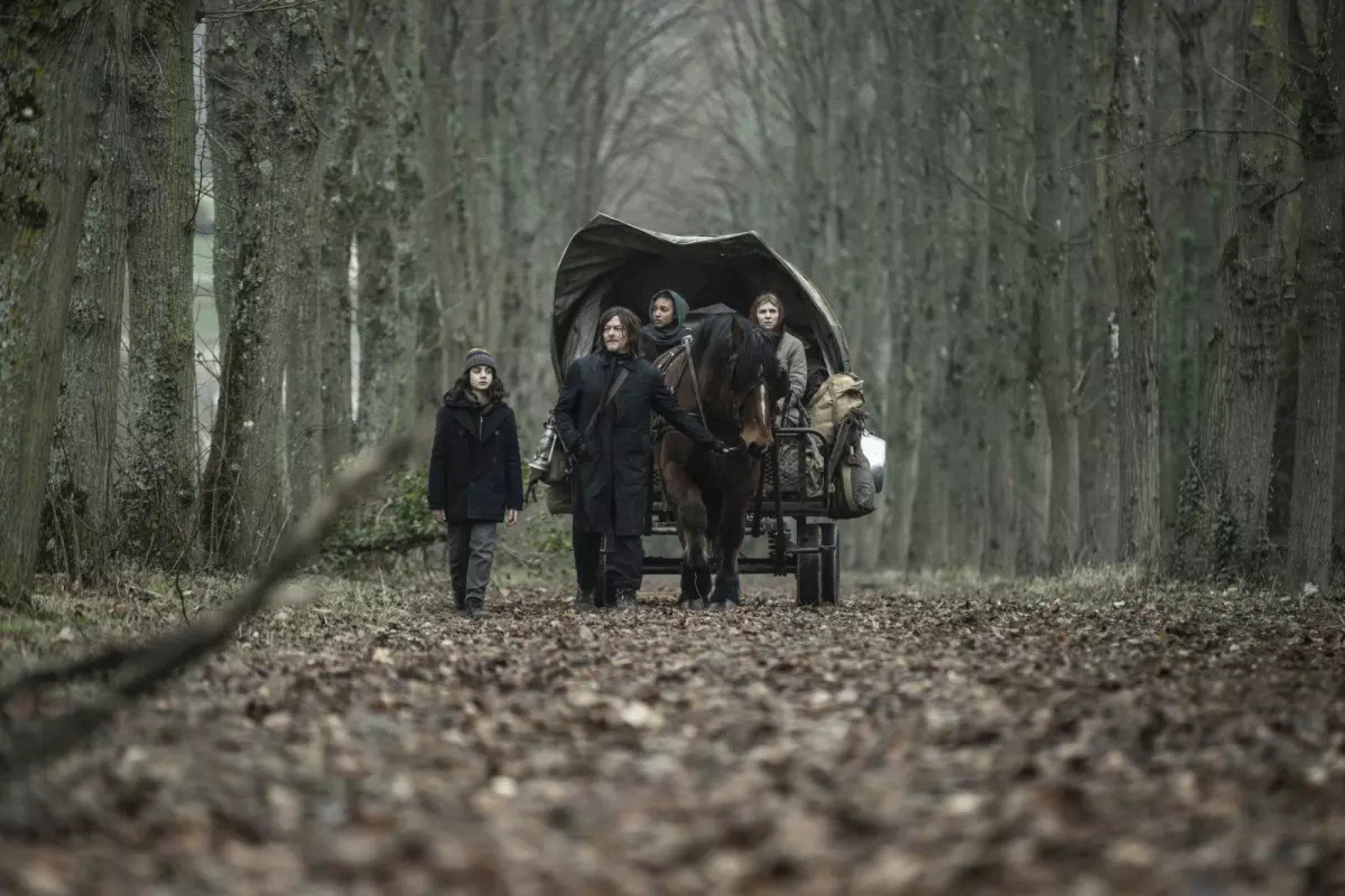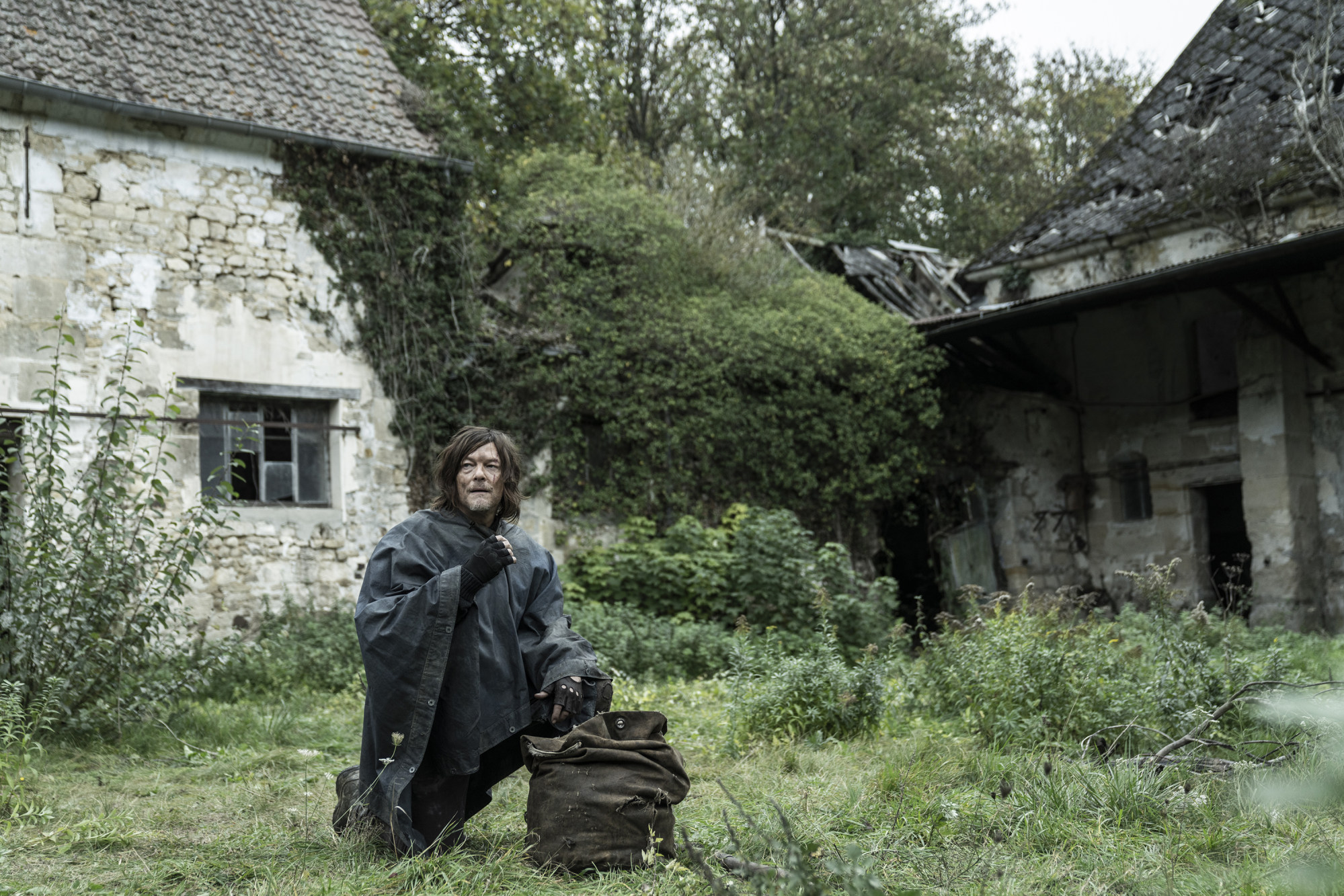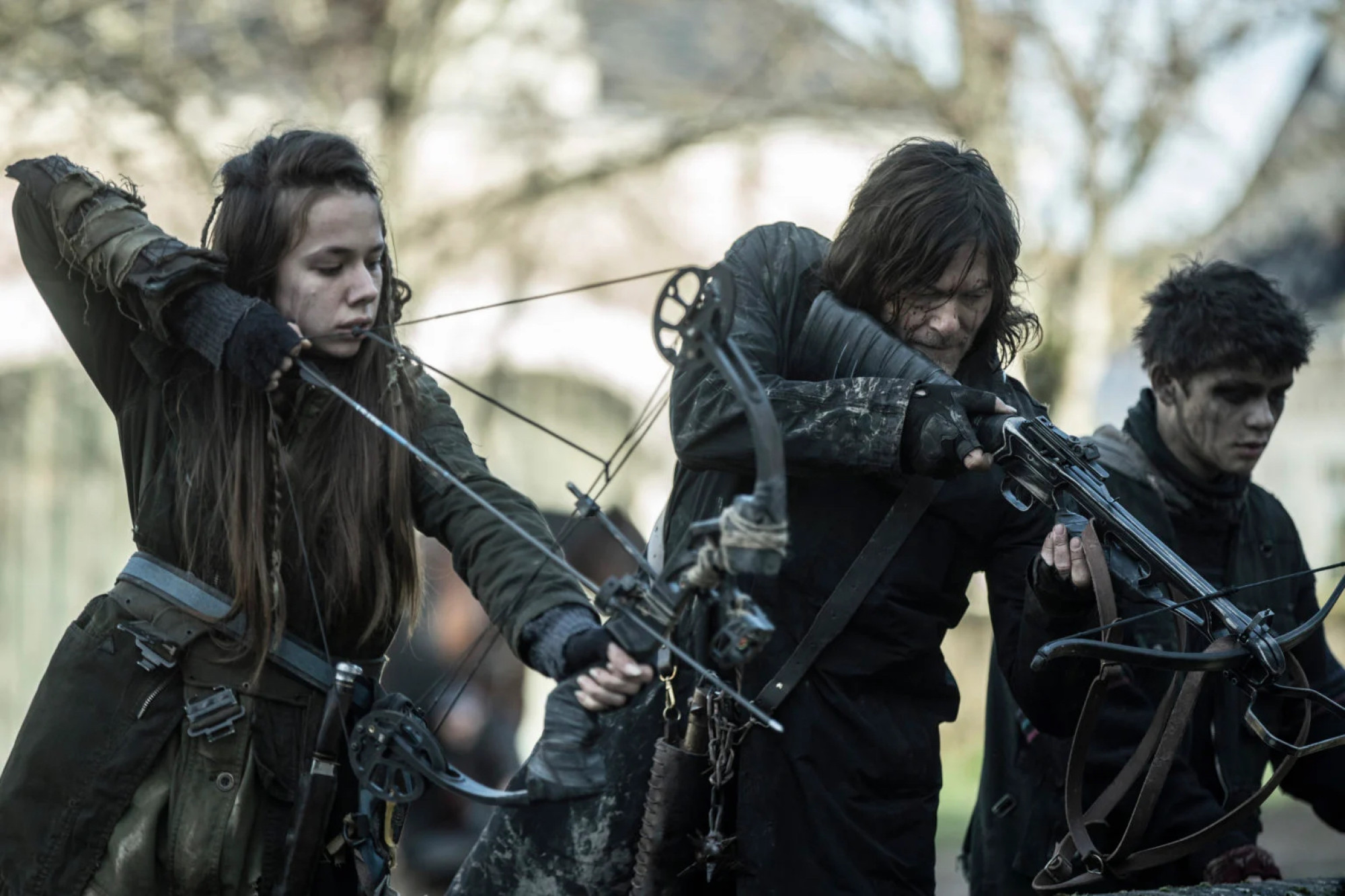The visual storytelling is a far cry from The Walking Dead.
The Walking Dead: plans for the zombie franchise that won’t die
The Walking Dead: plans for the zombie franchise that won’t die
“A lot of the great British and French directors, when they approach a landscape, they treat it like a character, like a personality. Think of [Lawrence of Arabia director] David Lean and the way he places people in an environment, and [Claude Berri,] the director of Jean de Florette and Manon des Sources,” says Percival.
Percival also lists Mexican filmmakers Alejandro Gonzalez Inarritu and three-time Oscar-winning cinematographer Emmanuel Lubezki as major inspirations.
There are plenty of cinematically adventurous shows in the streaming era – Barry, Atlanta and The Bear come to mind – these flavours are not new. But they are new to The Walking Dead.

“I really enjoyed working with the European team because they have different perspectives on the way they film things,” Nicotero says. “We talked about developing shots, where you get little bits and pieces of information as a shot develops.”
“The Walking Dead was sometimes intended to be a play, where the people … wouldn’t be moving fluidly through landscapes and locations,” he says. “So that was one of the first things that I noticed – the use of Steadicam in almost every scenario to allow the audience to absorb a lot of information as the camera drifts around the set and in between characters.”
Steadicam is a camera-stabilisation system that allows handheld operators to move freely through environments while still providing smooth, non-jittery images.
Life before Minari: Oscar nominee Steven Yeun’s every film ranked
Life before Minari: Oscar nominee Steven Yeun’s every film ranked
“I have a very close relationship with my Steadicam operators, and I just say, ‘Go with it’,” Tommaso Fiorilli, the Italian director of photography who shot Percival’s episodes, adds. “When I’m operating I see what the actor is doing and for me, it’s a ballet.”
He adds: “Sometimes you see shows, wherever [actors] are they have the same light. I like to light spaces rather than people, so I create an atmosphere. It gives diversity because when you move, the light changes.”
Production designer Clovis Weil, who is French, says Zabel gave him freedom to experiment with the sets and locations.

“There are a few things you expect, which come with [The Walking Dead] universe: decay, overgrown nature everywhere, trash, destruction.” However, he says there were many ways to play with that aesthetic.
“One of the things I like about the apocalypse is it allows you to create contrast,” he says. “In the market [in episode one], we have a former stand that sold bathing suits. So you have these silhouettes of a plastic female bust with a little bikini on her, and you have the zombie just next to it.”
Weil says a lot of inspiration came from art – he likes to conceive of sets as a 360-degree painting.
Is Netflix’s Zombieverse unscripted? Creators promise it is
Is Netflix’s Zombieverse unscripted? Creators promise it is
One of the key locations is a school where children have lived without parents since civilisation fell more than a decade earlier.
“For the school, I was inspired by an artist called Roger Ballen, who did some very disturbing, childlike paintings,” says Weil. “They have a very naive feeling, but very disturbing.
“For this community of small kids that since the age of four or five were abandoned, it was nearly like paintings in caves. We don’t see that much in the show, but at least it gives a feeling. They tell their story on the walls.”

“One of the things about the American series is you’re forever in a kind of nowhere zone of neutral Americana that’s decayed, or in a forest,” says Percival. “You’re always somewhere in Europe. You’re stumbling over ruins, buildings that have stood for two or 4,000 years, as you see in the opening with the Roman aqueduct or the great abbeys.”
Weil says the creators wanted to see an array of French cities and notable places in the series. “They wanted scale, they wanted scope,” he says. “Everything is Daryl’s journey from Marseilles to the Mont-Saint-Michel, with postcards of [the] French apocalypse in the middle.”
5 facts about cordyceps, parasitic fungus that inspired HBO’s The Last of Us
5 facts about cordyceps, parasitic fungus that inspired HBO’s The Last of Us
The show uses some iconic French locales, including, yes, the Eiffel Tower. And there is a hedonistic nightclub like a post-apocalyptic Cabaret.
“In one season, six episodes only, you get to see very different parts of France, very different communities,” Weil says. “You have three seasons of atmospheres in one.”
The Walking Dead: Daryl Dixon is currently available to Hong Kong viewers only via VPN.

